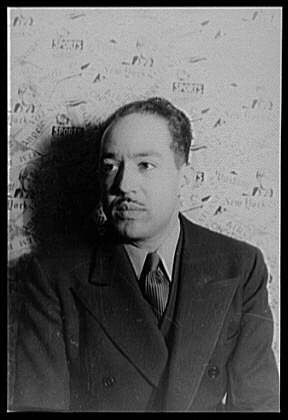Examining Extended Metaphors
In an extended metaphor, the author sustains the comparison for several lines or even throughout the entire piece. Read the brief poem below and notice how Pulitzer Prize-winning poet Carl Sandburg has created an extended metaphor by comparing the incoming fog to the movement of a cat. Using your notes, write each phrase in the poem that furthers the impression of the creeping fog as being cat-like. When you’re finished, check your understanding.

by Carl Sandburg
The fog comes
on little cat feet
It sits looking
over harbor and city
on silent haunches
and then moves on.
Sample Response:
You might have highlighted “little cat feet” and “silent haunches” since both of these phrases create feline imagery. The comparison of the fog to a cat is extended over several lines. Sandburg is suggesting that fog, like a cat, approaches quietly and stealthily.
CloseIn a longer poem or piece of prose, the comparison may be extended even more. Look at the poem below by Langston Hughes in which the speaker (a mother) gives her son advice based on her own life experience, comparing it to a staircase she has climbed. We know immediately that the author wants to show us that the mother has not had an easy life. She says it “ain’t been no crystal stair.”
The image of a staircase constructed of crystal is one of smoothness, luxury, and beauty. Instead, the mother describes the staircase of her life as containing tacks and splinters. These details about the staircase suggest pain and hardship.
Hughes was one of the leading figures in the Harlem Renaissance during the 1920s and 1930s. Keep in mind that the speaker’s realistic dialect mirrors southern black speech in the 1930s.
by Langston Hughes
Well, son, I’ll tell you:
Life for me ain’t been no crystal stair
It’s had tacks in it,
And splinters,
And boards torn up,
And places with no carpet on the floor-
Bare.
But all the time
I’se been a-climin’ on,
And reachin’ landin’s
And turnin’ corners,
And sometimes goin’ in the dark
Where there ain’t been no light.
So boy, don’t you turn back.
Don’t you set down on the steps
’Cause you find it’s kinder hard.
Don’t you fall now-
For I’se still goin’, honey,
I’se still climbin’,
And life for me ain’t been no crystal stair.

Source: Langston Hughes, Carl Van Vechten, Wikimedia Commons
Now use your notes to write each word or phrase that extends the metaphor of the mother’s life as a staircase.Were you able to identify most of the words and phrases Hughes uses to extend the metaphor? Check your understanding to see the poem again. The extensions of the metaphor are highlighted in green.
Sample Response:
Well, son, I’ll tell you:
Life for me ain’t been no crystal stair
It’s had tacks in it,
And splinters,
And boards torn up,
And places with no carpet on the floor-
Bare.
But all the time
I’se been a-climin’ on,
And reachin’ landin’s
And turnin’ corners,
And sometimes goin’ in the dark
Where there ain’t been no light.
So boy, don’t you turn back.
Don’t you set down on the steps
’Cause you find it’s kinder hard.
Don’t you fall now-
For I’se still goin’, honey,
I’se still climbin’,
And life for me ain’t been no crystal stair.
The mother in the poem is not literally “reachin’ landings” and “turnin’ corners.” Instead, the landings she reaches and the corners she turns on the staircase represent small accomplishments along the path of her life.
Try two more questions to test your understanding of metaphors. Answer them using your notes. When you’re finished, check your understanding.
- What might the act of “goin’ in the dark” with “no light” symbolize? (Hint: Think about times in your life when you felt like you were “in the dark" about something.)
- When the mother cautions her son not to “set down on the steps,” what is she really advising him against?
Sample Responses:
- You might say that “goin’ in the dark” is similar to a time when you felt confused and uncertain about how to proceed.
- You might say that the mother warns her son against giving up during difficult times when she tells him not to “set down on the steps.”